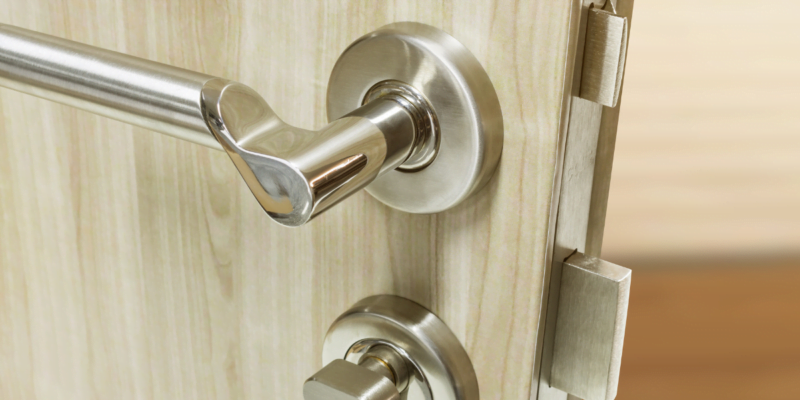Statistics show that home invasions and burglaries occur every 16 and 26 seconds in the United States. Additionally, figures show that most burglaries can be attributed to unlocked or unbarred windows and doors. Consequently, it is crucial to install a suitable locking system to boost security and decrease the likelihood of home invasions, break-ins, or burglaries.
Mortise locks are a typical and popular choice for both commercial and residential properties, and installing them can increase the safety and security of your home. Mortise locks have been around for centuries and are still the preferred lock in the insurance market today. In fact, some insurance providers will only cover your home if it has a mortise lock.
What Are Mortise Locks
Mortise locks are fitted into the door’s frame rather than on the surface. To install one, you will need to cut a rectangular opening in your door’s surface to serve as the pocket, then slide the lock into place. Furthermore, mortise locks are more challenging to pick than standard cylindrical locks. Therefore installing one can significantly increase the protection of your property.
Mortise Lock Types
Mortise Deadlock
Mortise deadlocks are keyed on the inside and the outside, making them highly versatile. Moreover, this type does not have an opening latch, unlike mortise sash locks.
Mortise deadlocks include a single bolt secured inside the door frame rather than on the exterior, providing superior strength and stability. In addition, they are commonly used on the exterior of front and back doors.
Mortise Sash Locks
The mortise sash lock is highly secure because of the functional combination of a latch and deadbolt. The latch is operated by the handle or knob, while the deadbolt requires a key to unlock the door. You can use mortise sash locks for either interior or exterior doors.
Components of Mortise Locks
- Cylinder – This component is placed in the door jamb and contains all moving parts other than the deadbolt.
- Body – This section contains everything else, including all electrical components and RFID main board interface, which enables remote door unlocking with RFID key cards.
- Faceplate – This is the part of the lock that is visible. A cylinder and cam are responsible for opening and closing the door among its many parts.
- Strike Plate – This is a flat metal plate fastened to the jamb. The striking plate keeps the door securely attached to its hinges in the face of extreme force or pressure.
- Deadbolt – They have two separate locking components that may be slid into place with a clockwise turn and retracted with a counterclockwise turn.
- Latch Bolt – This travels along tracks within the door frame to its maximum position, where it is locked.
- Handle – A piece of hardware fastened to the jamb of a door. This device is made consisting of a spring-loaded lever and a locking bolt.
Advantages of Installing Mortise Locks
1. Durability
Mortise locks in commercial settings are built to withstand heavy use and repeated opening and closing. Because of their resilience, they work wonderfully in institutional settings like hospitals and schools.
2. Security
Mortise locks are extremely secure since they are installed directly into the door frame rather than being attached to the door itself. Breaking into a house equipped with a mortise lock is more difficult since removing both components requires a lot of time and effort.
3. Adaptability
Adaptability is just another advantage of these high-security door locks. You can use mortise locks on various doors in residential and commercial settings and adjust their dimensions to fit gaps of varying widths between door frames and jambs.
4. Easy to Install
According to the experts of door hardware in Park City, UT, mortise locks can be fitted quickly and easily by a do-it-yourselfer because of their straightforward design.
The lock is typically installed in the door stiles after being inserted through the door’s edge or frame. This entails zero prep work on the part of the homeowner or business owner.
5. Aesthetics
Mortise locks are available in a wide range of designs, from the traditional to the cutting-edge, making them easy to incorporate into any structure.
6. Ease of Maintenance
If you want a lock that won’t need frequent adjustments after it’s installed. A good mortise lock is a must. They’re low-maintenance and still look great, which makes them quite useful.
Key Takeaway
All the entrances to your house should be treated as vulnerable points of entry. Because locks are typically the very first thing burglars try when they break in, picking the right ones is crucial.
Your property will be more secure, and your mind will be at ease if you invest in a good set of locks. Fortunately, mortise locks can provide that. They are ideal for residential use because of the assurance they offer. With their vast array of sizes, you can easily choose one that works with any door in your house.













Comments